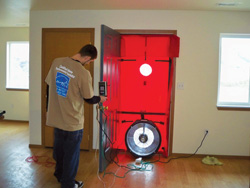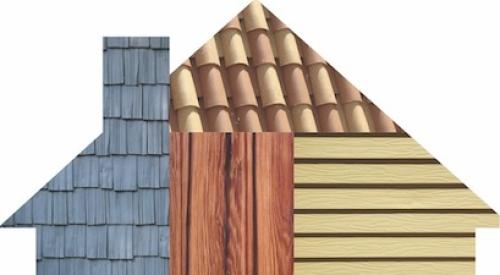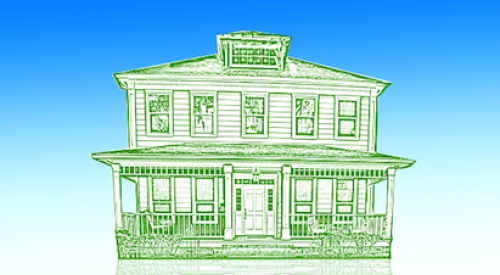With the stringency of minimum energy codes ramping up and consumer demand for greener and more efficient homes on the rise, there's no better time than now to figure out how your current cadre of home designs stacks up for future needs. Future-proofing your home designs is vital to maintaining a competitive edge, regardless of the state of the market - you don't want to be caught on your heels, ill-prepared to handle new industry and market demands once sales pick up.
Before you figure out where you're going with the homes you build and sell in the future, it's important to assess where you are right now relative to either current code requirements or some other level of performance, such as a green building standard. Many builders looking to revamp or refine their design offerings hire the NAHB Research Center as a one-stop resource to conduct these types of assessments. If you're interested in gauging your own level of preparedness for the future, the following information should get you started.
1. Start with a full design assessment and simulations
The most logical first step in this kind of design assessment is to catalog all of the energy features of the home for use in an energy simulation software program. The assessment not only provides a comprehensive level of detail in understanding all of the house features, it also provides the necessary information to simulate the whole-house energy performance and how this performance fares relative to current code requirements. This process will provide you with a base of the efficiency of your current designs; help you determine what might be feasible in terms of the new performance level you want to achieve; and guide you through the process of making various trade-offs with different features of your homes.
The biggest benefit of running a whole-house simulation program is the ability to adjust variables like product R-values (or system values), installation quality, equipment efficiencies and design placement of details such as windows and ducts to achieve the maximum level of synergy among all the home's products and systems to provide the most value to your business and your customers. For example, without the benefit of a simulation you may estimate that upgrading your HVAC system will garner the most savings. However, evaluating an increase in insulation levels and improved windows might achieve similar energy savings and also result in a less costly HVAC system. And this evaluation might benefit your preparedness for future energy code changes as well.
The simulations can also provide a way to understand how different energy features work together, such as higher insulation levels and lower infiltration, to decide where to make initial and ongoing investments in your house design improvements. The simulation results can help you pinpoint which upgrades, alone or in combination with other changes, might provide the most savings for your investment in terms of hard costs, labor and what you believe you can market to home buyers. REM/Rate and EnergyGauge are two of the most commonly used programs for whole-house energy simulations, but there are numerous appropriate options available. For more on energy simulation programs, check out DOE's Building Energy Software Tools Directory and search under "energy simulation" (http://apps1.eere.energy.gov/buildings/tools_directory).
2. Develop detailed scopes of work for all trades
While simulations are very helpful, they are also somewhat idealized, not taking into account all the things that can (and do) happen on a construction site. Specifically, simulations assume the perfect installation of products and systems to achieve performance minimums. If you're going to invest time and effort into developing a more advanced and efficient version of your current home plans, don't neglect details of the installation.
More than with typical home construction, high-performance homes have very little tolerance for deviation from the construction plans, and any significant departure can have a negative domino effect on the efficiency of the rest of the structure. Make sure your crews understand all the nuances of proper installation, particularly when it comes to framing details and the building envelope and air sealing. If you don't already have detailed scopes of work for each of your trade crews, this would be the perfect time to develop and implement them. For more on developing scopes of work, visit: www.toolbase.org (click Best Practices > Quality Resources for Builders).
3. Test the performance of current models
Performance testing on your current models can provide you with a baseline of how well the building envelope and duct system limit air leakage. These test results can be used in the simulation software to provide a more accurate assessment of your current home designs and construction practices. They serve as a barometer of how close (or far) you are to achieving your efficiency goal and where you most need to focus your attention. After you start building your more efficient designs, it's a good idea to repeat the same tests to validate the details entered into the simulation program and the decisions you made as a result of that analysis.
Blower door and duct tightness tests are the most common performance verification methods because they are able to show measurable results of the cumulative effect of your efforts toward making a home more efficient. For more on these types of tests, see our "Primer on Performance Testing" (Professional Builder, April 2010, p. 54).
4. Consider cost versus benefit for all enhancements
When all is said and done, product choices, simulations and other planning tools can only be guideposts for the decisions you make with your home designs. Ultimately, you need to evaluate what enhancements you are willing and able to make, and at what cost, so that you achieve the right balance of market appeal and profitability for your business. However, the process can be repeated regularly to help stay ahead of changing code and market demands. Investment in new products, establishing new trade contractor scopes of work and even investing in new house layouts to both increase efficiency and limit cost increases needs to be an ongoing and dynamic process to stay a couple steps ahead of changes in the building industry and the market.
The tools and techniques described here can help you take a more analytical view of your company's construction plans and operations. They provide you the baseline information so you can determine the most efficient, cost-effective and marketable trade-offs you can make without sacrificing the level of quality and performance you want to maintain in your homes. PB
Created in 1964, the NAHB Research Center (www.nahbrc.com) is a full-service product commercialization company that strives to make housing more durable, affordable and efficient. The Research Center provides public and private clients with an unrivaled depth of understanding of the housing industry and access to its business leaders.












